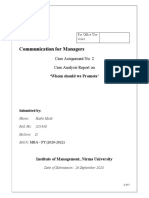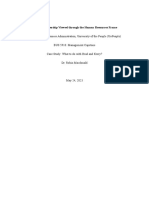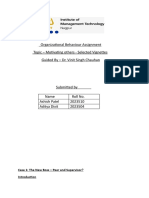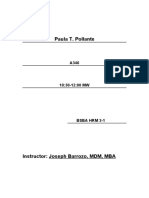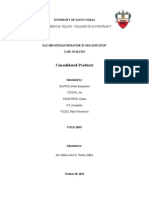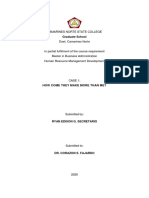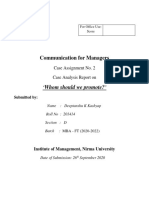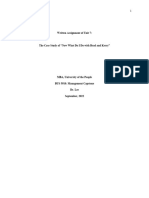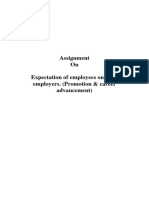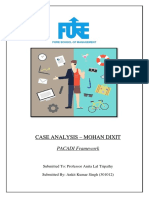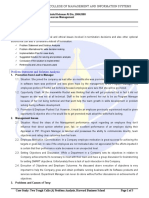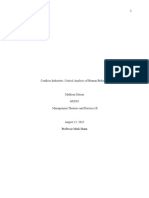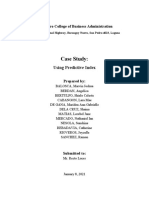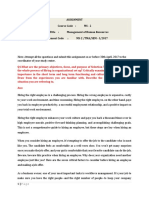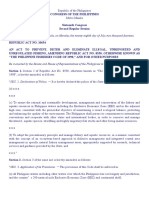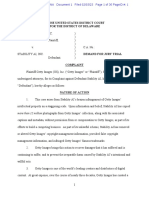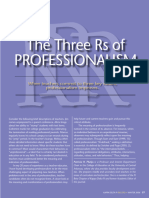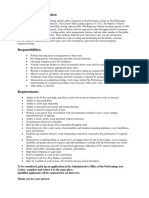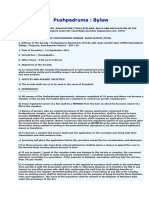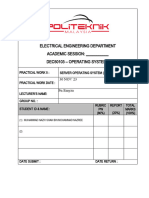0% found this document useful (0 votes)
79 views9 pagesManagement Capstone - Unit7 Written Assignment
This case study explores project manager Jason's dilemma in deciding whether to promote Brad or Kerry for an upcoming project during an economic downturn. It identifies the problem as talent management factors like performance reviews and the psychological contract. Jason must diagnose causes like each employee's communication style and skills. Possible alternatives include promoting Kerry based on consistent performance, promoting Brad for experience, providing coaching, or reassigning one to better suit their skills. The case study is valuable for studying business management concepts like employee evaluation, leadership decision-making, and aligning human resources with organizational strategy.
Uploaded by
FRANCIS FOSUCopyright
© © All Rights Reserved
We take content rights seriously. If you suspect this is your content, claim it here.
Available Formats
Download as PDF, TXT or read online on Scribd
0% found this document useful (0 votes)
79 views9 pagesManagement Capstone - Unit7 Written Assignment
This case study explores project manager Jason's dilemma in deciding whether to promote Brad or Kerry for an upcoming project during an economic downturn. It identifies the problem as talent management factors like performance reviews and the psychological contract. Jason must diagnose causes like each employee's communication style and skills. Possible alternatives include promoting Kerry based on consistent performance, promoting Brad for experience, providing coaching, or reassigning one to better suit their skills. The case study is valuable for studying business management concepts like employee evaluation, leadership decision-making, and aligning human resources with organizational strategy.
Uploaded by
FRANCIS FOSUCopyright
© © All Rights Reserved
We take content rights seriously. If you suspect this is your content, claim it here.
Available Formats
Download as PDF, TXT or read online on Scribd
/ 9

